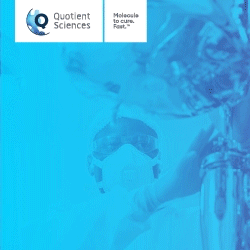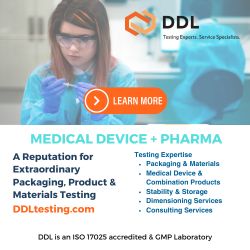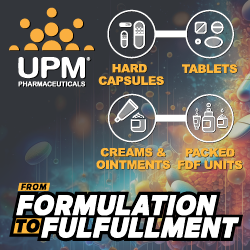Bio Platforms
Assembly Bio Selects Fourth HBV Core Inhibitor Candidate for Advancement Into Clinical Development
Assembly Biosciences, Inc. recently announced it has selected a fourth core inhibitor candidate, ABI-4334 (4334), that has been optimized for potency, to advance into clinical…
Adial Pharmaceuticals Reaches Full Enrollment Target for ONWARD Phase 3 Trial of AD04 for the Treatment of Patients With Alcohol Use Disorder
Adial Pharmaceuticals, Inc. recently announced it has reached its full enrollment target of 290 subjects in the company’s ONWARD Phase 3 trial evaluating AD04 as…
IN8bio Completes Dosing of First Cohort in Phase 1 Clinical Trial
IN8bio, Inc. recently announced completion of dosing of the first patient cohort in a Phase 1 clinical trial of INB-100, a donor-derived gamma-delta T cell…
ProPhase Labs Acquires Whole Genome Sequencing Company
ProPhase Labs, Inc. recently announced the acquisition of Nebula Genomics, a privately-owned personal genomics company. The company’s recently formed subsidiary, ProPhase Precision Medicine, Inc., completed…
Crinetics Pharmaceuticals’ Oral ACTH Antagonist Demonstrates Pharmacologic Proof-of-Concept With Dose-Dependent Cortisol Suppression in Single Ascending Dose Portion of Phase 1 Study
Crinetics Pharmaceuticals, Inc. recently announced positive preliminary findings from the single ascending dose (SAD) portion of a first-in-human Phase 1 clinical study with CRN04894 demonstrating pharmacologic…
Valneva Initiates Further Phase 3 Clinical Trial for its COVID-19 Vaccine Candidate
Valneva SE recently announced the initiation of a further Phase 3 trial (VLA2001-304) for its inactivated, adjuvanted COVID-19 vaccine candidate, VLA2001. VLA2001-304 aims to generate…
Terumo Blood & Cell Technologies & PhotonPharma Inc. Announce Collaboration to Develop Novel Cancer Immunotherapy
Terumo Blood and Cell Technologies and PhotonPharma Inc. recently announced they have established a memorandum of understanding (MOU) for collaboration to develop Innocell, a novel….
Lykan Bioscience & Vineti Announce Partnership to Advance Cell-Based Therapies From Clinical to Commercialization
Lykan Bioscience and Vineti recently announced a partnership to unite Lykan’s purpose-built cell therapy manufacturing capabilities and Vineti’s industry-leading….
Dyadic & Sorrento Announce Binding Term Sheet to License Dyadic’s Lead COVID-19 Vaccine Candidate & C1 Technology for Protein-Based Coronavirus Vaccines & Therapeutics
Dyadic International, Inc. and Sorrento Therapeutics, Inc. recently announced the signing of a binding term sheet to enter into a License Agreement to develop and commercialize vaccines, therapeutics, and diagnostics for….
VERAXA Biotech & Indivumed Cooperate on the Development of Precision Oncology Antibody
VERAXA Biotech GmbH, Heidelberg, and Indivumed GmbH, Hamburg, recently announced their agreement to jointly discover modulatory and functional antibodies against several targets that are relevant for….
ARCA biopharma Announces Submission of PCT Patent Application for the Treatment of COVID-19 Infection & Associated Coagulopathy With rNAPc2
ARCA biopharma, Inc. recently announced it has submitted a Patent Cooperation Treaty (PCT) patent application, following on previously submitted provisional patent applications, for the use…
Aravive Announces First Patient Dosed in Phase 1b/2 Clinical Trial of AVB-500 for the Treatment of Pancreatic Adenocarcinoma
Aravive Inc. recently announced it has dosed the first patient in the Phase 1b portion of its Phase 1b/2 trial of AVB-500 in combination with…
Fulcrum Therapeutics Announces Positive Interim Results from Phase 1 Healthy Adult Volunteer Study of FTX-6058 for Sickle Cell Disease
Fulcrum Therapeutics, Inc. recently announced positive interim results from the ongoing single- and multiple-ascending dose (SAD and MAD) Phase 1 trial with FTX-6058 in healthy…
Apollomics Doses First Patient in a Phase 1 Clinical Trial of APL-102
Apollomics Inc. recently announced the successful dosing of the first patient in a Phase 1 clinical study of APL-102 in patients with advanced solid tumors.…
Evonik Acquires JeNaCell to Expand Biomaterials Portfolio for New Medical Device Markets
Evonik has acquired German biotech company JeNaCell. The acquisition expands Evonik’s biomaterials portfolio to provide biotechnologically derived cellulose. The nature-identical material developed by….
Carrick Therapeutics Announces Collaboration With Roche to Evaluate Novel Samuraciclib Combination to Treat HR+ Breast Cancer
Carrick Therapeutics recently announced a clinical collaboration with Roche to evaluate a novel combination of Carrick’s samuraciclib and Roche’s giredestrant in CDK4/6i resistant HR+, HER2-…
Mustang Bio Receives European Medicines Agency PRIME Designation for MB-107 to Treat X-Linked Severe Combined Immunodeficiency in Newly Diagnosed Infants
Mustang Bio, Inc. recently announced that the European Medicines Agency (EMA) has granted Priority Medicines (PRIME) designation to MB-107, its lentiviral gene therapy for the…
Biogen Announces Results from Phase 3b NOVA Study Evaluating Every 6-Week Dosing With Natalizumab in Relapsing-Remitting Multiple Sclerosis
Biogen Inc. recently announced results from the 2-year prospective, randomized, interventional, controlled, open-label Phase 3b NOVA study (NCT03689972). NOVA was designed to estimate a potential…
CatSci & Argonaute RNA Partner to Expedite Oligonucleotide Manufacturing for Gene-Silencing Therapeutics
CatSci Ltd and Argonaute RNA recently announced a chemistry, manufacturing, and control (CMC) development collaboration focused on novel therapeutic oligonucleotides…..
Lantern Pharma & Allarity Therapeutics Enter Into Agreement for Future Clinical Development of Irofulven
Allarity Therapeutics A/S and Lantern Pharma Inc. recently announced they have entered into an exclusive agreement under which Lantern will reacquire global rights to Irofulven (LP-100) and assume full….
What are Bio Platforms?
Platforms (or asset-independent technologies to capture all kinds of capabilities that can be leveraged across many different drug candidate assets rather than just discovery tools that the term ‘platform’ immediately brings to mind) are ubiquitous in modern pharma. They are the product of an arms race, to secure access to the best capabilities in key areas.
Platform technologies are considered a valuable tool to improve efficiency and quality in drug product development. The basic idea is that a platform, in combination with a risk-based approach, is the most systematic method to leverage prior knowledge for a given new molecule. Furthermore, such a platform enables a continuous improvement by adding data for every new molecule developed by this approach, increasing the robustness of the platform.
But it has often been said that access to the latest technological platforms to aid efficient drug discovery and development is limited to Big Pharma, which can more easily justify the costs of creating and operating these platforms.
Benefits of Bio Platforms
Platform technologies have the ability to radically improve upon current products and generate completely novel products. In this sense, they open up new arenas for drug discovery and development, potentially increasing the number of therapeutic options for patients. Once a single compound or therapeutic has been generated and demonstrates a clinical benefit in patients, it is more likely this platform technology can successfully be applied to other therapeutic areas, derisking future compounds/products.
Complex drugs by their very nature are challenging and costly to manufacture. This, in turn, translates into higher costs for patients and other payers. In order to provide safe and effective therapies at a reasonable price, it is necessary for the industry to develop manufacturing technologies that reduce costs and provide a consistent product. While the initial investment may be larger, manufacturing costs will be lower over time as the manufacturing process is solidified.
Scale and Investment of Bio Platforms
Despite the initial upfront costs, platform technologies inevitably provide pragmatic solutions to production challenges, while yielding safer and more effective therapeutic products. It has often been said that one of the key features that distinguishes “Big Pharma” from biotech is access to the latest technological platforms to aid efficient drug discovery and development.
These platforms range from vast chemical libraries, ultra-high throughput screening and huge genetic databases in discovery, to predictive toxicology platforms, cutting-edge ‘omics’ and even deep-seated knowledge of particular therapeutic areas in development. All these platforms have two things in common: They can be used on any (or many) development candidate assets, and they cost huge sums to establish in the first place, and in a few cases each time they are used as well. Hence their restriction to the largest pharmaceutical companies (and a few of the so-called “big biotechs” that are, in many ways, indistinguishable from the old-guard pharma).
Only when you have hundreds of active projects can you justify the cost of creating and operating these platforms. Or so the mantra goes. It is access to these platforms that keeps the big companies ahead in the race to discover and develop the best medicines (or at least counterbalance the disadvantages of being large and slow-moving, depending on your point of view). But is that just an assertion? How much evidence is there to support the proposition that the efficiency gains due to these platforms outstrips the cost of creating and maintaining them?
Keeping these technologies “cutting edge” has become so expensive that increasingly we hear pharma companies talking of “pre-competitive” approaches to develop the next generation. A group of companies might develop a platform capability they then share. The principle goal of such initiatives is to access even grander and more expensive tools than individual companies could afford, rather than to dramatically cut costs (although sharing platforms rather than developing the same thing in parallel in each silo should at least keep a lid on rising costs).
















